Disclosure: This article contains affiliate links. We may earn a commission from purchases at no extra cost to you, which helps our travel content.
Standing on the jagged shoreline of Hamnøy at 2 AM, my camera poised to capture the golden light bathing rust-red rorbuer fishing cabins, I couldn't help but marvel at the paradox before me. Here in the Lofoten Islands, 95 miles above the Arctic Circle, the sun refuses to set during summer months, creating what photographers call the 'golden hour' – except it lasts for hours on end. The archipelago's dramatic mountains plunging into crystal-clear fjords create a photographer's paradise where marine life and breathtaking landscapes converge in perfect harmony.
The Midnight Sun: Understanding Arctic Light Dynamics
As someone who's spent years documenting marine ecosystems around the world, I've witnessed extraordinary natural phenomena – but nothing quite compares to the midnight sun of Lofoten. During summer months (late May through July), the sun never fully sets, instead skimming the horizon before beginning its ascent again. This creates a photographer's dream: extended golden hours with soft, directional light that can last 4-6 hours.
The quality of light here defies conventional photography rules. My light meter became my constant companion, helping me navigate the unusual exposure challenges. The extended golden light bathes the dramatic landscapes in warm hues that transform mundane scenes into extraordinary captures.
What fascinated me as a scientist was how this perpetual daylight affects marine life. Phytoplankton blooms reach their peak, attracting diverse marine species to the nutrient-rich waters. While photographing landscapes, I often found myself distracted by the wealth of marine activity visible from shore – nature's perfect synchronicity on display.
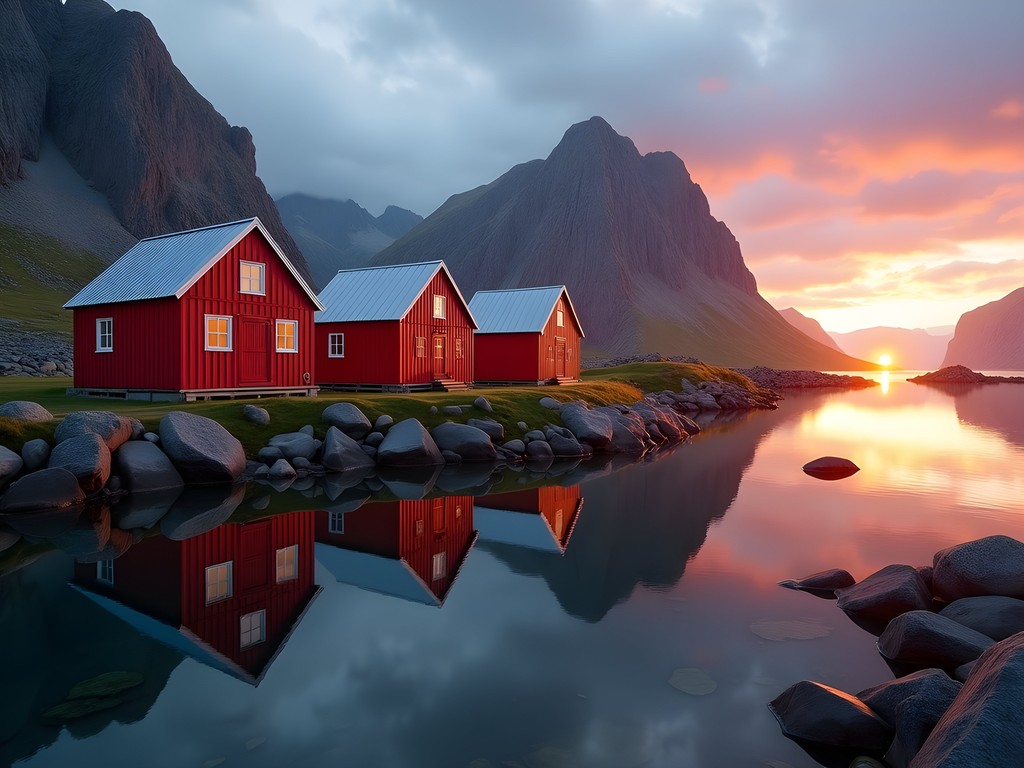
💡 Pro Tips
- The 'best' light often occurs between 11 PM and 3 AM when the sun is lowest on the horizon
- Use graduated ND filters to balance exposure between bright skies and darker foregrounds
- Bracket your exposures when shooting high-contrast scenes like mountains against bright skies
Essential Locations: Where Science Meets Scenery
My scientific background draws me to locations where geological wonders and marine ecosystems intersect. These five spots showcase Lofoten's photographic diversity while offering fascinating ecological insights:
Uttakleiv Beach: Famous for its 'eye' rock formation, this beach also features tide pools teeming with marine life. Arrive at low tide with your waterproof boots to capture both landscape shots and macro details of sea stars and anemones.
Reinebringen: The iconic view over Reine requires a challenging hike, but rewards photographers with panoramic compositions of mountains, sea, and villages. The newly constructed stone stairway makes the ascent safer, though still demanding.
Kvalvika Beach: Accessible only by a moderate hike, this secluded beach offers pristine compositions without crowds. The turquoise waters contrast dramatically with surrounding peaks, while the beach itself often reveals fascinating marine debris carried by Arctic currents.
Skagsanden Beach: Known for its black sand patterns, this beach creates abstract photography opportunities when the tide recedes. I spent hours here photographing the intricate designs while explaining to my curious fellow travelers how tidal forces create these natural artworks.
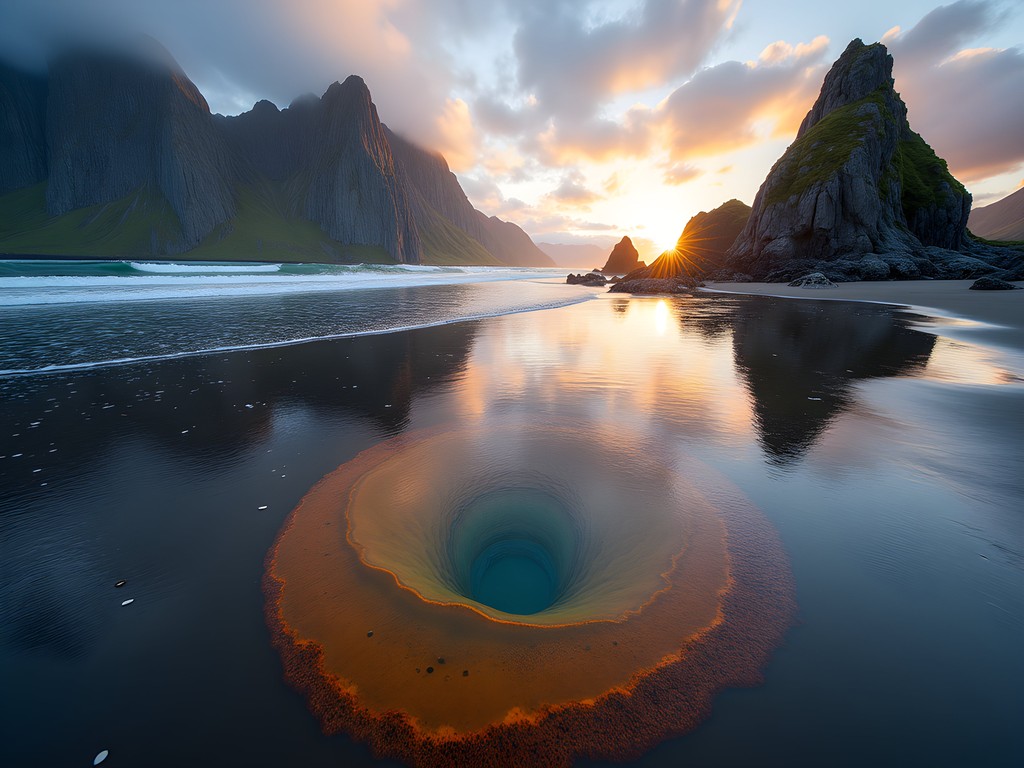
💡 Pro Tips
- Visit Uttakleiv Beach at low tide to photograph tide pools and marine life
- For Reinebringen, start hiking at least 4 hours before your desired photography time
- Pack microspikes for hiking, as some trails remain slippery even in summer
Technical Considerations: Gear and Settings for Arctic Conditions
Even summer in Lofoten presents unique challenges for photographers. The weather can change dramatically within minutes – I've experienced brilliant sunshine, fog, and rain all within a single hour. This unpredictability demands both technical preparation and specialized gear.
My weather-sealed camera bag proved invaluable for protecting equipment during sudden weather shifts. I also relied heavily on my circular polarizer to manage reflections on water surfaces and enhance the vibrant colors of Arctic vegetation.
For those dramatic mountain shots, I found myself constantly reaching for my wide-angle lens filter system. The ability to use graduated ND filters proved essential for balancing exposures between bright skies and shadowed mountains.
Temperature fluctuations can cause condensation issues when moving between environments. I always carry several silica gel packets in my camera bag and allow equipment to acclimate gradually when transitioning between indoor and outdoor settings.

💡 Pro Tips
- Pack extra batteries – the cold temperatures drain them faster even in summer
- Use a microfiber cloth to protect against sea spray when shooting near shorelines
- Consider using focus stacking for landscape shots to ensure sharpness throughout
Wildlife Encounters: Photographing Lofoten's Marine Inhabitants
My background in marine biology makes wildlife photography an inevitable part of my Lofoten experience. The archipelago hosts remarkable biodiversity both above and below the water line.
Sea eagles soar above the fjords, providing dramatic action shots for those with telephoto lenses. My lightweight spotting scope helped me locate these magnificent birds before they came into camera range.
For photographing seabird colonies on the western islands, I recommend a carbon fiber monopod rather than a tripod – it provides stability while allowing quick repositioning as birds move.
The waters around Lofoten support diverse marine life. Consider booking a wildlife-focused boat tour to photograph seals, orcas (seasonal), and numerous seabird species. As a marine biologist, I was particularly fascinated by the shallow-water kelp forests visible from shore – these productive ecosystems support the entire marine food web and create ethereal underwater landscapes for those brave enough to don a wetsuit with camera housing.
Remember that wildlife photography here requires patience and respect. The Arctic ecosystem is fragile, and many species are sensitive to human disturbance. Always maintain appropriate distances and follow local guidelines for responsible wildlife viewing.
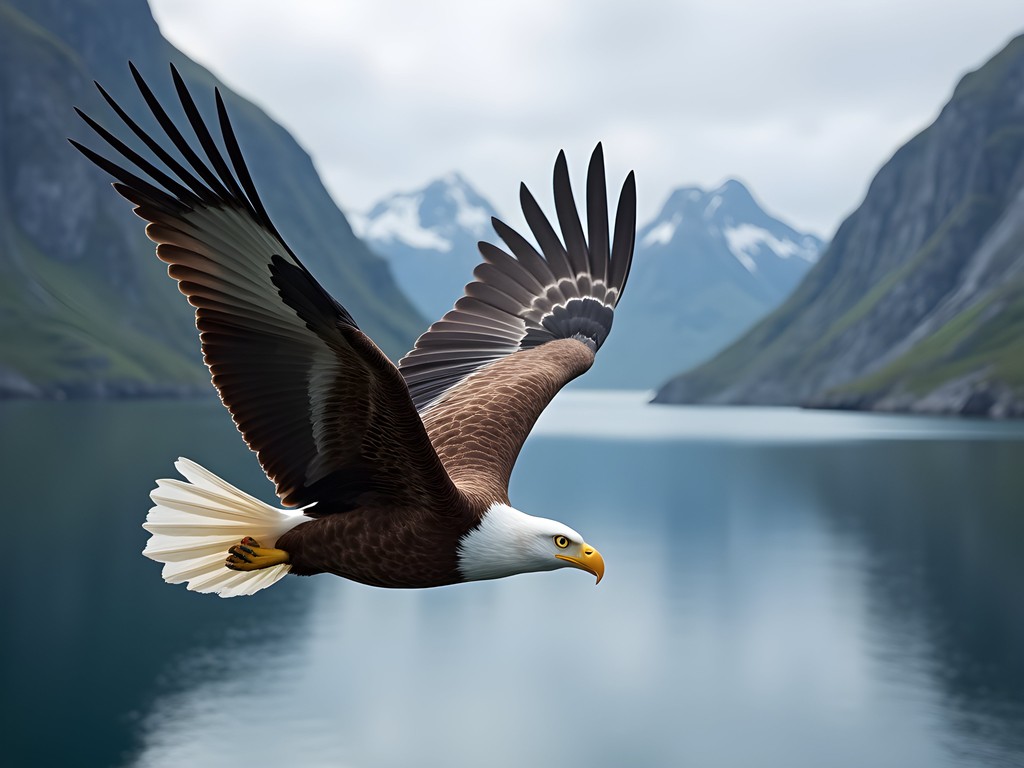
💡 Pro Tips
- Research wildlife behavior before attempting photography to anticipate movements
- Use silent shooting mode when photographing sensitive bird colonies
- Bring binoculars to spot distant wildlife before setting up camera equipment
Cultural Photography: Fishing Villages and Maritime Heritage
Beyond natural landscapes, Lofoten's centuries-old fishing culture provides rich photographic opportunities. The iconic red rorbuer (fishermen's cabins) create striking compositions against mountain backdrops. Visit Nusfjord, one of Norway's oldest and best-preserved fishing villages, early morning when soft light illuminates the wooden structures.
The archipelago's fishing heritage connects deeply with its marine ecosystem – something I find particularly fascinating as a marine biologist. Traditional cod fishing methods remain sustainable, and you'll see wooden racks (hjell) used for drying cod throughout the islands. These create distinctive geometric patterns for unique architectural photography.
For authentic cultural photography, I recommend visiting working harbors during morning hours when fishing boats return with their catch. My compact audio recorder proved invaluable for capturing ambient sounds of harbor life while photographing – these audio notes help me recall the complete sensory experience when reviewing images later.
To truly understand the connection between culture and environment, visit the Norwegian Fishing Village Museum in Å. The exhibits provide historical context that will enhance your photographic storytelling. I spent a fascinating afternoon learning how climate patterns influence fishing practices – knowledge that deepened my appreciation for the relationship between human communities and marine ecosystems.
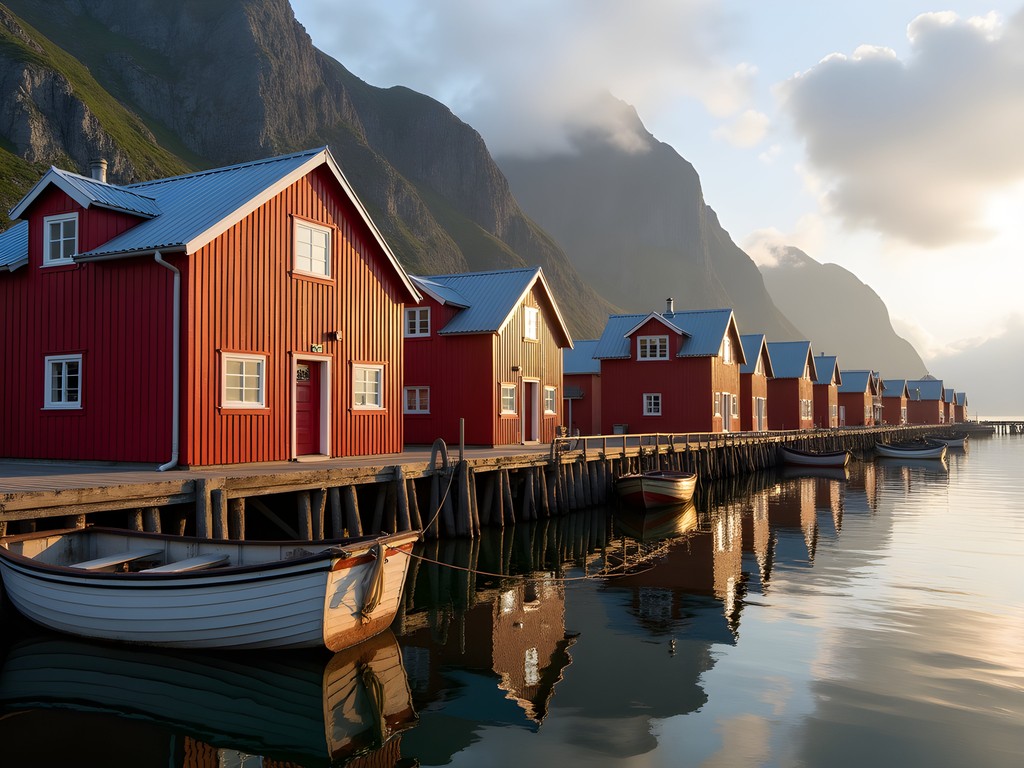
💡 Pro Tips
- Photograph fishing villages during blue hour (just before sunrise) for magical lighting
- Ask permission before photographing fishermen at work – a smile and respectful approach usually receives a positive response
- Look for leading lines created by docks, piers, and fishing equipment to create compelling compositions
Final Thoughts
As I packed my gear on the final morning, watching the golden light play across Reinefjorden one last time, I reflected on how Lofoten had transformed my understanding of Arctic ecosystems. These islands represent a perfect harmony of geological wonder, marine biodiversity, and human adaptation – all bathed in that extraordinary light that photographers chase across continents.
While my scientific background draws me to the ecological stories behind each image, any photographer will find inspiration in Lofoten's dramatic landscapes. The archipelago demands technical skill and physical effort but rewards the persistent with portfolio-defining images. Beyond photography, these islands offer a profound connection to natural rhythms that our modern lives often obscure.
I invite you to experience Lofoten with both camera and curious mind. Document not just what you see, but what you learn. And please photograph responsibly – this fragile Arctic ecosystem faces increasing tourism pressure. By treading lightly and sharing thoughtfully, we help preserve both the landscapes and the stories they tell for generations of photographers to come.
✨ Key Takeaways
- The midnight sun creates extended golden hours perfect for landscape photography
- Weather changes rapidly – prepare with appropriate gear and flexible planning
- Understanding the ecological and cultural context enhances photographic storytelling
- Early morning and late evening offer the most dramatic lighting conditions
- Responsible photography practices help preserve this fragile Arctic ecosystem
📋 Practical Information
Best Time to Visit
June to mid-July for midnight sun, August for balanced daylight hours
Budget Estimate
$3,000-5,000 for one week (including luxury accommodations, car rental, and activities)
Recommended Duration
7-10 days minimum
Difficulty Level
Moderate (Requires Some Hiking For Best Viewpoints)


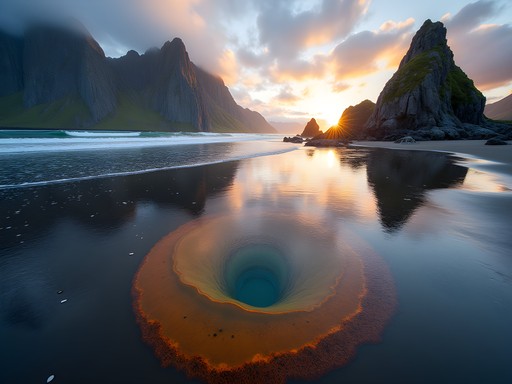
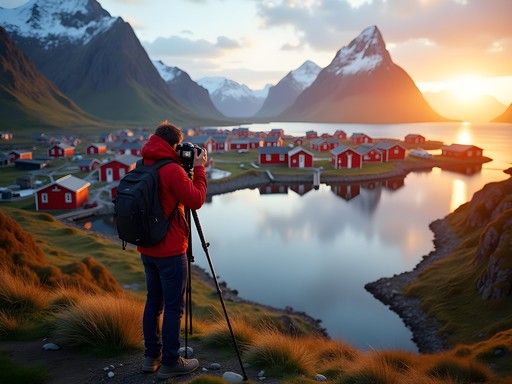
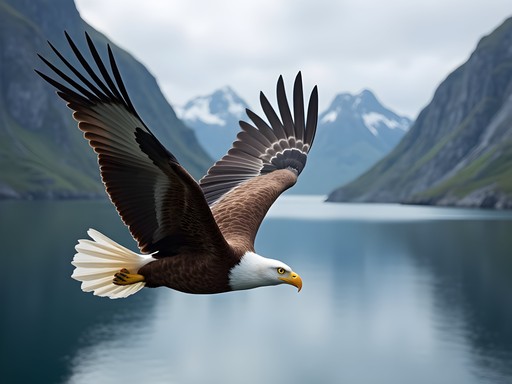
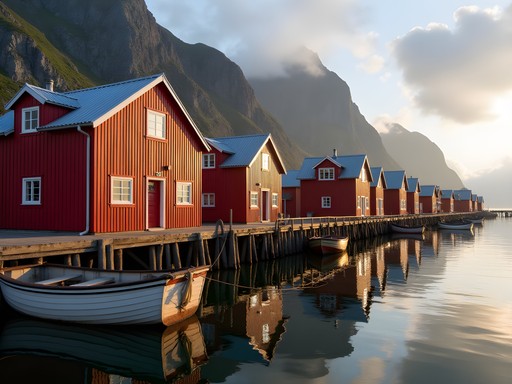


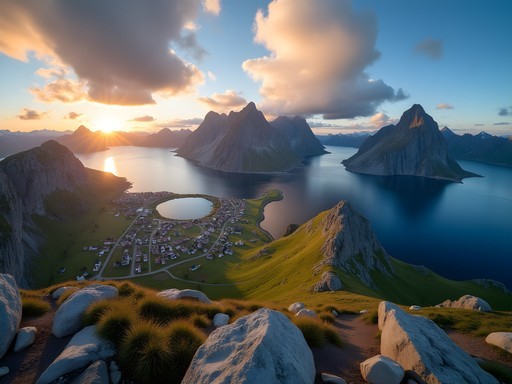
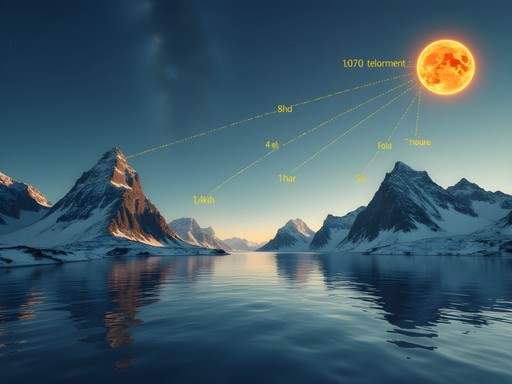






Comments
adventurebuddy
Just got back from Lofoten last week and this post is giving me serious post-trip blues! Nicole, your wildlife photography tips were super helpful - those sea eagles are FAST and I wouldn't have gotten any decent shots without planning ahead. For anyone going, I'd add that Unstad Beach is worth visiting too - not as famous as some spots mentioned here but the way the light hits the water at sunset is magical. Also bring more memory cards than you think you need... I filled up 128GB in just 3 days because I couldn't stop shooting!
Nicole Burns
Unstad is a gem! I almost included it but the post was getting too long. So glad you enjoyed the wildlife tips - those eagles are definitely challenging subjects!
smartace
Great post! I'm a beginner photographer heading to Lofoten in October. Will I still get good light then or is summer the only time worth going? Also, is a tripod absolutely necessary?
adventurebuddy
Not Nicole, but October in Lofoten is amazing! You'll get shorter days but magical light when the sun is low. And YES to the tripod - I used my travel tripod constantly there. The wind can be brutal so you want something sturdy but portable.
smartace
Thanks for the advice! Will definitely bring a tripod then.
backpackmaster
Just got back from Lofoten and your guide would have saved me so much trial and error! That section about the reflective snow creating unexpected exposure challenges was spot on. Wish I'd read this before going!
sunnylover
Those red cabins against the mountains are STUNNING! Dream destination right there.
happylife
Great post! How did you manage sleep with the midnight sun? Planning our trip for next summer and wondering if we need special blackout curtains for our Airbnb.
Nicole Burns
Sleep was definitely challenging! I brought a good eye mask and it was essential. Many accommodations have blackout curtains but not all - worth checking with your host ahead of time. The flip side is you can shoot practically 24/7!
Marco Flores
Nicole, your section on the Arctic light dynamics is spot on! When I visited Lofoten last year, I was completely unprepared for how the light behaves differently than in southern locations. I'd add that photographers should really embrace bracketing there - the dynamic range between shadows on mountains and bright reflections on water can be extreme. I spent three nights at Uttakleiv Beach trying to capture the perfect balance. Ended up sleeping in my car for a few hours between golden hours because I didn't want to miss anything! Your technical gear section saved me from making the same mistake twice with insufficient batteries. The cold really does drain them faster than expected.
adventurebuddy
Sleeping in your car sounds hardcore, Marco! Was it comfortable enough? I'm thinking of renting a campervan when I go.
Marco Flores
Definitely go for the campervan! My back still hasn't forgiven me for those car nights 😅 Plus, having a mobile base means you can chase the best light conditions without worrying about getting back to a hotel.
escapephotographer
This post literally gave me chills! I've been dreaming about photographing Lofoten for years. Those midnight sun shots are unreal! Nicole, did you find it hard to adjust your sleep schedule with the constant daylight? I'm planning a trip next summer and wondering if I should book accommodation with blackout curtains or just embrace the sleepless photographer life 😂
Nicole Burns
Thanks for your enthusiasm! Sleep was definitely tricky - I'd recommend both blackout curtains AND an eye mask. Some of the rorbuer cabins have thin curtains that don't block much light. But honestly, you'll be so excited by the light conditions that you'll find yourself shooting at 2am anyway!
escapephotographer
Thanks Nicole! Adding eye mask to my packing list now!
Hunter Thompson
This guide is EXACTLY what I needed! I was in Lofoten last summer but completely messed up my exposure settings trying to capture that midnight sun. The light there is like nothing else I've experienced - it's like golden hour that lasts forever! Your tip about using graduated ND filters for those fjord shots is spot on. I used my filter system but struggled with the extreme dynamic range. Did you find yourself bracketing a lot of shots? Your Hamnøy image is absolutely stunning - might need to book another trip just to get that shot!
freeninja
Hunter - I had the same problem with exposures there! That light is magical but tricky. Did you visit Uttakleiv Beach? Those rock formations at sunset are insane.
Hunter Thompson
YES! Uttakleiv was incredible - those circular rocks with the midnight sun behind the mountains... pure magic! Though I nearly got soaked by a rogue wave trying to get the perfect composition 😂
waveguy5207
Beautiful shots, Nicole! How did you handle the extreme temperature changes with your camera gear? I'm planning a winter trip and worried about condensation issues.
Nicole Burns
Thanks waveguy5207! Great question - I kept my gear in sealed bags when moving between temperatures and let it acclimatize slowly. Also used silica gel packets religiously! For winter, I'd recommend bringing extra batteries as they drain super fast in the cold. Keep them close to your body when not in use.
waveguy5207
That's really helpful, thanks! Will definitely pack extra batteries and some silica packets.
winterone
How difficult was it to reach those classic Hamnøy bridge shots? Is it accessible for someone with mild mobility issues?
Venture X
Premium card with 2X miles, $300 travel credit, Priority Pass